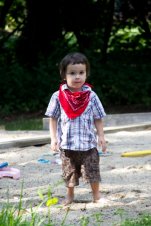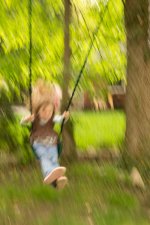Online Magazine
Recent Posts
- Safeguard your Cellphone Photos
- Black & White to Color – Instantly
- Wearing Many Hats
- Video Roundup
- Rescuing Your Blurry Pictures
- Showing Their Age
- What is Your Angle?
- Panorama Photos
- Humorous Photos
- Close Ups
- Fisheye Pictures
- Photo Antiquities
- Printing Big
- Appreciating Scale
- Celebrity Sightings
Tags
More Places to Go
- Free "How-To" Books “How To” books for popular cameras 0
- Vist Us on Facebook keep in touch with us on Facebook 2
Archives
- July 2023 (1)
- March 2023 (2)
- February 2023 (1)
- December 2022 (1)
- October 2022 (1)
- September 2022 (8)
- August 2022 (9)
- July 2022 (1)
- June 2022 (1)
- June 2021 (1)
- May 2021 (1)
- March 2021 (5)
- February 2021 (4)
- January 2021 (2)
- April 2019 (1)
- March 2019 (1)
- February 2019 (1)
- October 2018 (2)
- April 2018 (1)
- March 2018 (4)
- February 2018 (1)
- November 2017 (1)
- August 2017 (1)
- June 2017 (1)
- April 2017 (1)
- March 2017 (5)
- February 2017 (2)
- January 2017 (1)
- October 2016 (1)
- September 2016 (1)
- August 2016 (1)
- July 2016 (1)
- May 2016 (1)
- April 2016 (1)
- March 2016 (2)
- February 2016 (1)
- January 2016 (2)
- December 2015 (1)
- November 2015 (1)
- October 2015 (3)
- April 2015 (1)
- March 2015 (5)
- February 2015 (1)
- January 2015 (4)
- December 2014 (2)
- November 2014 (5)
- October 2014 (2)
- September 2014 (1)
- August 2014 (2)
- July 2014 (1)
- May 2014 (1)
- April 2014 (5)
- March 2014 (5)
- December 2013 (2)
- November 2013 (18)
- October 2013 (1)
- September 2013 (1)
- August 2013 (1)
- July 2013 (1)
- June 2013 (3)
- May 2013 (1)
- April 2013 (2)
- March 2013 (1)
- February 2013 (1)
- January 2013 (1)
- December 2012 (1)
- November 2012 (2)
- October 2012 (2)
- September 2012 (5)
- August 2012 (2)
- July 2012 (1)
- June 2012 (1)
- May 2012 (1)
- April 2012 (4)
- March 2012 (1)
- February 2012 (1)
- January 2012 (3)
- December 2011 (1)
- November 2011 (3)
- October 2011 (1)
- September 2011 (2)
- August 2011 (2)
- June 2011 (3)
- May 2011 (4)
- April 2011 (8)
- March 2011 (8)
- February 2011 (10)
- January 2011 (6)
- December 2010 (11)
- November 2010 (14)
- October 2010 (6)
- September 2010 (12)
- August 2010 (2)
- July 2010 (4)
- June 2010 (3)
- May 2010 (1)
- April 2010 (1)
- March 2010 (2)
- February 2010 (1)
- January 2010 (1)
- December 2009 (1)
- November 2009 (2)
- October 2009 (2)
- September 2009 (1)
- August 2009 (3)
- July 2009 (2)
- June 2009 (1)
- May 2009 (2)
- April 2009 (1)
- March 2009 (2)
- February 2009 (1)
- January 2009 (3)
Making your Photos Move
03rd July 2013
A case against Stop Action
The usual “rule” for photography is to choose a shutter speed fast enough to eliminate the jitter or bluriness when the subject moves.
But sometimes ignoring the rule leads to more interesting photographs.
Here’s a few examples.
Use your camera’s shutter speed priority mode. Try setting the shutter speed to 1/100th of a second or slower – e.g. 1/25 or 1/50. If you use an even slower shutter speed, you may end up with blurry photos since you may not be able to hold the camera steady enough without introducing camera shake.
With just a little practice you can make your photos move.
Written by Arnie Lee
Don’t Just Stand There
05th August 2011
a case for more activity
With fourteen grandkids, I feel very lucky to have ample opportunity to catch them on film.
And while I enjoy taking portraits of them – conventional static pictures of them at rest – I also like to capture them as they’re going about their youthful business.
Below are a few examples of each.
You have a many choices when capturing kids. If you haven’t done so already, try shooting the young ones as they’re involved with their activities.
Written by Arnie Lee
Make your photos “move”
01st June 2011
You don’t always have to stop the action
Sports and action photos are most often made with a higher shutter speed that “stops the action” and produces a tack-sharp image.
However by using a relatively slow shutter speed, you can emphasize the movement to create a totally different feel to the picture.
Don’t hesitate to set your shutter speed to 1/30 or slower and let the action do the talking. Slow dancing can make for some interesting photos. Do you agree? Send me your comments.
Written by Arnie Lee











